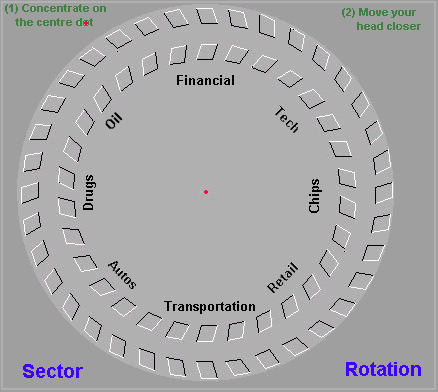| Safe Withdrawal Rate(s) |
Every month or two there seems to be a discussion (debate? argument?), somewhere, about Safe Withdrawal Rates.
By this set of three words, the combatants in the discussion (usually) mean:
- A number, expressed as a percentage (like 4%), called the SWR
... that's the Rate word. - This Rate determines (in some prescribed manner) how much to withdraw from some portolio value
... that's the Withdrawal word. - The result of withdrawing at this Rate will be that your portfolio will last until you drop dead (or for 30 or 40 years or whatever)
... that's the Safe word.
>You have a problem with that?
Well ... yes, because it's (usually) assumed that:
- SWR is a fixed number.
- The portfolio to which this SWR is applied is the original, starting portfolio or maybe the current portfolio ... or whatever.
- That, based upon some test (like applying the strategy to historical data or playing with Monte Carlo simulations), there's a high probability that your portfolio will survive you.
So, without using my patented technique, how can a retiree make such a determination with any confidence?
>You say "The Rate determines in some prescribed manner"? What does that mean?
It depends upon who's generating the SWR, but it often means that the withdrawals increase with inflation or ...
>Is inflation fixed?
Sometimes, but that's not my point.
>So what IS your point?
My point is that the future is so uncertain that a retiree cannot -should not - calculate a SWR (except for amusement).
>Aah, so SWRs are useless, eh?
On the contrary, they're very useful but, in my humble opinion, not for the retiree.
In fact, somebuddy in their twenties, just starting to save for an eventual retirement, should spend some time calculating SWRs
to see how much to stash away for the next umpteen years, so that s/he can retire in some financial comfort.
>And would their calculations be different than for the retiree?
Yes, I think so. The young person will usually invest monthly (perhaps via payroll deductions) and needs to
look at long term market behaviour, largely ignoring current market conditions except, perhaps, to adjust their monthly
allocations from time to time (as market conditions change ... over the years). One would not expect this person to continually calculate some
SWR as market conditions change and modify their monthly investments. They would (I suspect) arrive at some reasonable number,
like the notorious 4%, and decide that they'd need a certain portfolio size at retirement ... and plan their current investment strategy to achieve that portfolio.
Eventually, at retirement, they can forget SWRs and adopt a withdrawal strategy that doesn't ignore current market conditions.
At retirement they can (depending upon market conditions) modify their withdrawal rate and
monthly expenses ... things over which they have a great deal of control.
>I take it you don't like the part about a "fixed" withdrawal rate.
Yes. That's right. I ...
>So what should a retiree do?
In my opinion, they should adopt sensible withdrawal rates
>Sensible Withdrawal Rates? That's SWR too, eh?
Very funny.
Indeed, I think that retirees may have spent thirty or forty years planning their retirement, modifying their portfolio allocations,
changing their monthly contributions ... then, when they DO retire, they will quickly learn that adopting any predetermined withdrawal rate is
perilous. They will quickly learn that withdrawals should be tied to current market conditions. If, ten years into their retirement,
their portfolio has tanked - or doubled - they would NOT (I hope) cease cerebral activity and blindly withdraw 4% of their starting portfolio.
>So how does a retiree determine ...
How much to withdraw? I think that, more important than market machinations or
Monte Carlo simulations, is the cost of electricity ... in deciding what to withdraw.
>Huh?
As I've mentioned, you can take a look at
this.
| Here are some online spreadsheets to play with: | ... and a picture to help with your allocations 
|

